Landscaping in Charlton: Transforming Outdoor Spaces
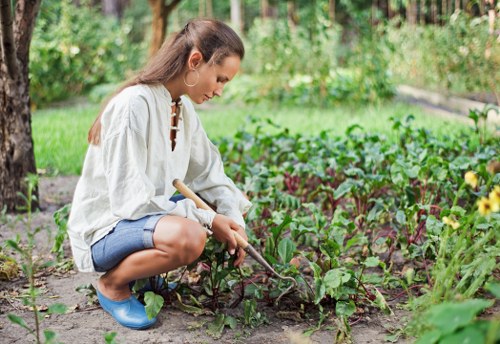
Charlton, a picturesque town known for its vibrant community and serene landscapes, offers a unique canvas for homeowners and businesses looking to enhance their outdoor spaces. Landscaping in Charlton isn’t just about aesthetic appeal; it’s about creating functional, sustainable, and inviting environments that complement the natural beauty of the area.
Whether you’re looking to design a lush garden, install a durable patio, or create a welcoming entrance for your property, understanding the nuances of landscaping in Charlton can make a significant difference. This comprehensive guide explores the key aspects of landscaping in Charlton, offering insights and tips to help you achieve the outdoor space of your dreams.
From selecting the right plants that thrive in Charlton’s climate to choosing materials that withstand the local weather conditions, every decision you make contributes to the overall success of your landscaping project.
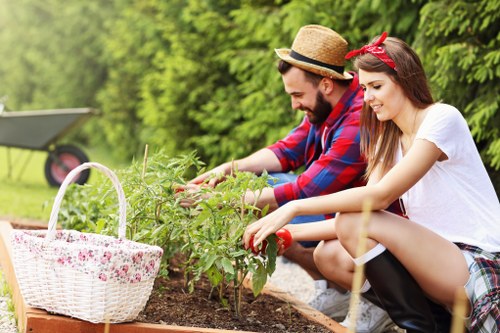
Understanding the Charlton Climate
Charlton experiences a temperate climate, characterized by warm summers and mild winters. This climate is ideal for a wide variety of plants, allowing for diverse and vibrant landscapes throughout the year. However, understanding the specific weather patterns and seasonal changes is crucial for selecting plants that will thrive and for planning maintenance activities.
The region receives moderate rainfall, which supports the growth of both native and non-native plants. Proper irrigation systems can help optimize water usage, ensuring that your garden remains lush even during dryer periods. Additionally, implementing sustainable practices such as rainwater harvesting can contribute to environmental conservation.
Temperature fluctuations between seasons necessitate the selection of hardy plant species that can withstand occasional frosts and heatwaves. Incorporating a mix of perennials and annuals can provide year-round color and structure to your landscape.

Choosing the Right Plants for Your Landscape
Native vs. Non-Native Plants
When planning your landscape, one of the first decisions is whether to use native or non-native plants. Native plants are well-adapted to Charlton’s climate and soil conditions, making them more resilient and easier to maintain. They also support local wildlife, including pollinators like bees and butterflies, which are essential for a healthy ecosystem.
Non-native plants, on the other hand, can offer unique colors and textures that may not be available among native species. While they may require more maintenance and care, they can add a distinct character and variety to your outdoor space.
Consider a balanced approach by incorporating a mix of both native and non-native plants to achieve a diverse and sustainable landscape.
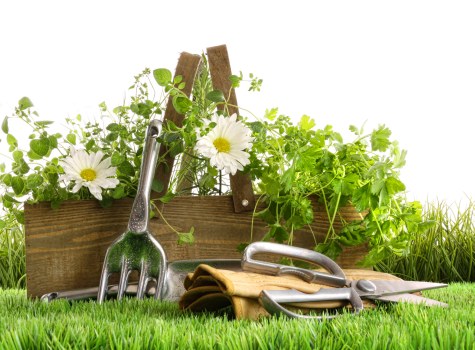
Popular Plant Choices in Charlton
- Hydrangeas: Known for their stunning blooms, hydrangeas add a touch of elegance to any garden.
- Hostas: Ideal for shaded areas, hostas offer lush foliage and a variety of colors.
- Lavender: This aromatic plant attracts pollinators and provides a pleasant fragrance.
- Japanese Maple: Perfect for adding structure and vibrant fall colors.
- Ornamental Grasses: These grasses add movement and texture to the landscape.
Choosing plants that complement each other in terms of color, texture, and growth habits will create a cohesive and visually appealing landscape.

Planning Your Landscape Design
Assessing Your Space
Before diving into planting and construction, it’s essential to assess your available space. Consider factors such as sunlight exposure, soil quality, existing structures, and drainage patterns. Creating a detailed plan will help you identify potential challenges and opportunities for your landscaping project.
Measure the dimensions of your yard or property and sketch a rough layout. Identify areas that receive full sun, partial shade, or full shade, as this will influence plant selection and placement.
Additionally, take note of any existing trees, shrubs, or structures that you wish to keep or remove. Understanding the natural features of your property will help you make informed decisions during the design process.
Defining Your Goals
Determine what you want to achieve with your landscaping project. Are you aiming to create a relaxing garden retreat, an entertaining outdoor living space, or a functional area for gardening and vegetable cultivation? Clearly defining your goals will guide your design choices and ensure that the final outcome aligns with your vision.
Consider how you plan to use the space, who will be using it, and what features are most important to you. This could include elements such as seating areas, pathways, water features, lighting, and storage solutions.
Creating a Cohesive Design
A cohesive design ensures that all elements of your landscape work together harmoniously. Start by selecting a central theme or style that reflects your personal preferences and complements the architectural style of your home or business.
Common landscaping styles include modern, rustic, Mediterranean, and cottage gardens. Each style has its unique characteristics, color palettes, and material choices that contribute to the overall aesthetic.
Incorporate focal points such as specimen plants, sculptures, or water features to draw attention and add interest to your landscape. Balance is key—ensure that no single element overwhelms the space.
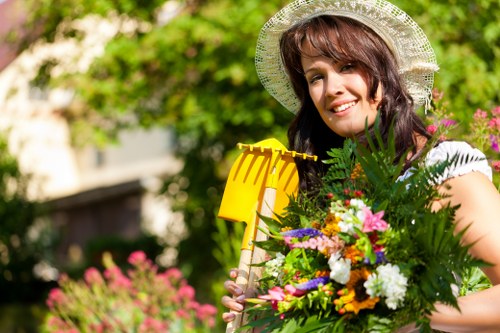
Hardscaping Elements
Patios and Walkways
Hardscaping elements like patios and walkways provide structure and functionality to your landscape. Patios serve as outdoor living spaces where you can relax, entertain guests, and enjoy the beauty of your garden. When designing a patio in Charlton, consider materials such as natural stone, brick, concrete, or pavers that complement your overall design theme.
Walkways guide visitors through your garden and can highlight key features. Curved paths create a sense of discovery, while straight paths offer a more formal and structured appearance. Ensure that your walkways are well-lit and maintained to enhance safety and accessibility.
Retaining Walls and Fencing
Retaining walls not only add visual interest but also serve functional purposes such as preventing soil erosion and creating elevated planting beds. Choose materials that blend seamlessly with your landscape, whether it’s stone, brick, or timber.
Fencing provides privacy, security, and a defined boundary for your property. Select fencing styles that match your design aesthetic, whether you prefer ornate wrought iron, classic wooden panels, or modern metal designs.
Outdoor Lighting
Outdoor lighting enhances the beauty and functionality of your landscape after dark. It highlights architectural features, pathways, and focal points, creating a magical ambiance. Incorporate a mix of ambient, task, and accent lighting to achieve a balanced and inviting atmosphere.
Solar-powered lights, LED fixtures, and strategically placed lanterns are energy-efficient options that offer both practicality and style.
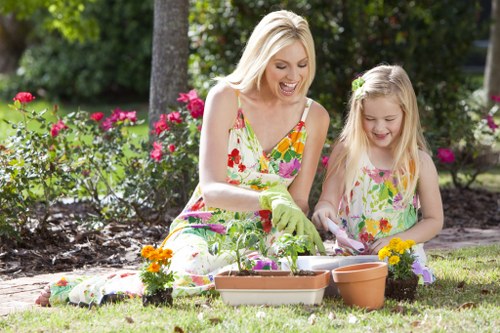
Planting and Maintenance
Planting Techniques
Proper planting techniques ensure the health and longevity of your plants. Begin by preparing the soil, which should be rich in nutrients and well-draining. Amend the soil with compost or organic matter to improve its structure and fertility.
When planting, dig holes that are twice as wide as the root ball and of the appropriate depth to accommodate the plant’s root system. Gently spread the roots and backfill the hole with soil, ensuring that the plant is positioned at the correct depth.
Mulching around your plants helps retain moisture, suppress weeds, and regulate soil temperature. Choose organic mulches like bark or wood chips for added benefits to soil health.
Irrigation and Watering
Effective irrigation is essential for maintaining a healthy landscape. Charlton’s climate allows for a variety of irrigation systems, including drip irrigation, soaker hoses, and sprinkler systems. Drip irrigation is particularly efficient, delivering water directly to the plant roots and minimizing evaporation.
Establish a consistent watering schedule based on the specific needs of your plants and the seasonal climate. Early morning is the best time to water, reducing the risk of fungal diseases and ensuring that plants have sufficient moisture throughout the day.
Pruning and Trimming
Regular pruning and trimming help maintain the shape and health of your plants. Remove dead or diseased branches, and thin out dense foliage to improve air circulation and light penetration. Pruning also encourages vigorous growth and enhances the overall appearance of your landscape.
Use sharp, clean tools to make precise cuts, and follow proper pruning techniques for each plant species to avoid damage and promote healthy development.
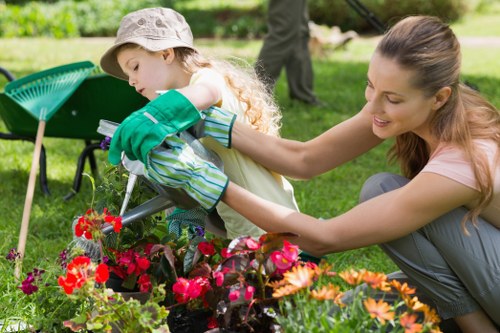
Sustainable Landscaping Practices
Water Conservation
Implementing water conservation techniques is essential for sustainable landscaping in Charlton. Utilize drought-resistant plants that require less water, and design your landscape to maximize water efficiency. Incorporate rain gardens and permeable pavements to manage stormwater runoff and recharge groundwater.
Installing a smart irrigation system can optimize water usage by adjusting watering schedules based on weather conditions and soil moisture levels.
Soil Health
Healthy soil is the foundation of a thriving landscape. Test your soil to determine its pH and nutrient levels, and amend it as needed to create an optimal growing environment. Organic fertilizers and compost improve soil structure and provide essential nutrients for plant growth.
Practicing crop rotation and incorporating cover crops can prevent soil depletion and reduce erosion, ensuring long-term soil fertility.
Native Wildlife Support
Designing your landscape to support native wildlife enhances biodiversity and contributes to a balanced ecosystem. Include a variety of plants that provide food, shelter, and habitat for local birds, insects, and other wildlife.
Installing birdhouses, bat boxes, and insect hotels can further encourage wildlife to inhabit your garden, promoting pollination and natural pest control.
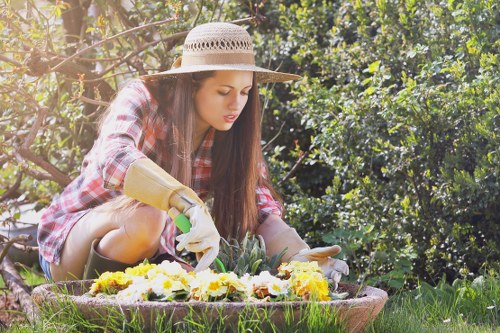
Hiring Professional Landscaping Services in Charlton
Benefits of Professional Landscaping
Engaging professional landscaping services ensures that your project is executed with expertise and precision. Professionals bring a wealth of knowledge about plant selection, design principles, and maintenance practices specific to Charlton’s environment.
The benefits of hiring professionals include saving time, accessing specialized tools and materials, and achieving a polished and cohesive design. Professionals can also provide ongoing maintenance services to keep your landscape looking its best year-round.
Choosing the Right Landscaping Company
Selecting the right landscaping company in Charlton involves considering several factors. Look for companies with a strong portfolio of completed projects, positive customer reviews, and relevant certifications or licenses. It’s important to choose a company that understands your vision and communicates effectively throughout the project.
Request quotes from multiple companies and compare their services, pricing, and timelines. A reputable landscaping company will provide a detailed proposal outlining the scope of work, materials, and costs involved.
Cost Considerations
The cost of landscaping in Charlton can vary based on the size of the project, the complexity of the design, and the materials used. It’s essential to establish a budget before beginning your project and discuss it with your landscaping professional to ensure that your vision aligns with your financial constraints.
Investing in high-quality materials and plants may have a higher upfront cost but can lead to long-term savings by reducing maintenance needs and extending the lifespan of your landscape features.

Seasonal Landscaping Tips
Spring
Spring is the perfect time to rejuvenate your landscape. Start by cleaning up any debris from the winter months and preparing your garden beds for planting. Plant spring-blooming flowers and vegetables to take advantage of the growing season.
Prune dormant trees and shrubs, and apply a fresh layer of mulch to protect roots from temperature fluctuations.
Summer
During the summer months, focus on maintaining your irrigation system to ensure your plants receive adequate water. Prune and deadhead flowers to promote continuous blooming and prevent the spread of diseases.
Install shade structures or plant shade-tolerant species to protect your garden from intense sunlight and reduce water evaporation.
Autumn
Autumn is ideal for planting trees and perennials, as cooler temperatures and increased rainfall create optimal growing conditions. Rake fallen leaves and incorporate them into your compost to enrich the soil.
Prepare your garden for winter by protecting sensitive plants with burlap or frost blankets and draining irrigation systems to prevent freezing.
Winter
In winter, focus on protecting your landscape from harsh weather conditions. Use mulch or straw to insulate plant roots and prevent soil erosion. Maintain pathways and hardscaping elements by clearing snow and debris.
Plan your landscaping projects for the upcoming year by researching new plant varieties and design ideas to implement in the spring.
Enhancing Curb Appeal
Front Yard Design
Your front yard is the first impression visitors and passersby have of your property. Designing a welcoming front yard can significantly enhance your home’s curb appeal. Incorporate elements such as symmetrical plantings, well-maintained lawns, and attractive pathways to create an inviting entrance.
Consider adding seasonal flowers, ornamental shrubs, and accent lighting to highlight architectural features and make your home stand out.
Driveway Landscaping
Driveway landscaping complements the overall aesthetic of your property and provides a smooth transition from the street to your home. Plant greenery along the edges of the driveway, install edging materials, and use decorative gravel or paving stones to enhance its appearance.
Incorporate lighting along the driveway to improve safety and add visual interest during the evening hours.
Entryways and Porches
Transforming your entryway and porch into a stylish and functional space adds to the overall appeal of your home. Use planters, hanging baskets, and decorative elements to personalize your porch. Comfortable seating and outdoor decor create a welcoming atmosphere for guests.
Ensure that your entryway is well-lit and free of clutter to maintain a neat and attractive appearance.
Conclusion
Landscaping in Charlton offers endless possibilities for transforming outdoor spaces into beautiful, functional, and sustainable environments. By understanding the local climate, selecting the right plants, planning a cohesive design, and incorporating both softscaping and hardscaping elements, you can create a landscape that reflects your personal style and enhances the natural charm of Charlton.
Whether you choose to undertake the project yourself or hire professional services, careful planning and maintenance are key to achieving a thriving and visually appealing landscape. Embrace the opportunity to connect with nature, support local wildlife, and create a serene sanctuary that you can enjoy for years to come.
Ready to transform your outdoor space? Contact us today to start your landscaping journey in Charlton!
